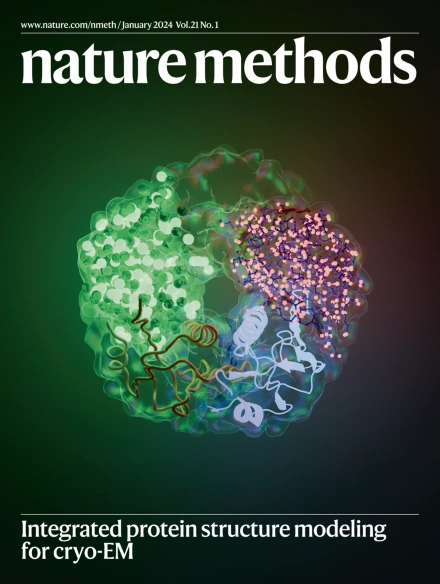Probe set selection for targeted spatial transcriptomics
IF 36.1
1区 生物学
Q1 BIOCHEMICAL RESEARCH METHODS
引用次数: 0
Abstract
Targeted spatial transcriptomic methods capture the topology of cell types and states in tissues at single-cell and subcellular resolution by measuring the expression of a predefined set of genes. The selection of an optimal set of probed genes is crucial for capturing the spatial signals present in a tissue. This requires selecting the most informative, yet minimal, set of genes to profile (gene set selection) for which it is possible to build probes (probe design). However, current selections often rely on marker genes, precluding them from detecting continuous spatial signals or new states. We present Spapros, an end-to-end probe set selection pipeline that optimizes both gene set specificity for cell type identification and within-cell type expression variation to resolve spatially distinct populations while considering prior knowledge as well as probe design and expression constraints. We evaluated Spapros and show that it outperforms other selection approaches in both cell type recovery and recovering expression variation beyond cell types. Furthermore, we used Spapros to design a single-cell resolution in situ hybridization on tissues (SCRINSHOT) experiment of adult lung tissue to demonstrate how probes selected with Spapros identify cell types of interest and detect spatial variation even within cell types. Spapros is a probe set selection pipeline for targeted spatial transcriptomics that optimizes for both transcriptional and within-cell type variation.

定向空间转录组学的探针组选择。
靶向空间转录组学方法通过测量一组预定义基因的表达,以单细胞和亚细胞分辨率捕捉组织中细胞类型和状态的拓扑结构。选择一组最佳的检测基因对于捕捉组织中存在的空间信号至关重要。这就需要选择信息量最大但又最小的一组基因进行剖析(基因组选择),并为其设计探针(探针设计)。然而,目前的选择通常依赖于标记基因,无法检测连续的空间信号或新状态。我们介绍了 Spapros,这是一种端到端探针组选择管道,它能优化用于细胞类型鉴定的基因组特异性和细胞类型内的表达变异,从而在考虑先验知识以及探针设计和表达限制的同时,解析空间上不同的群体。我们对 Spapros 进行了评估,结果表明它在细胞类型恢复和细胞类型外表达变异恢复方面都优于其他选择方法。此外,我们还利用 Spapros 设计了一个成人肺组织的单细胞分辨组织原位杂交(SCRINSHOT)实验,展示了用 Spapros 选择的探针如何识别感兴趣的细胞类型,甚至在细胞类型内部也能检测到空间变异。
本文章由计算机程序翻译,如有差异,请以英文原文为准。
求助全文
约1分钟内获得全文
求助全文
来源期刊

Nature Methods
生物-生化研究方法
CiteScore
58.70
自引率
1.70%
发文量
326
审稿时长
1 months
期刊介绍:
Nature Methods is a monthly journal that focuses on publishing innovative methods and substantial enhancements to fundamental life sciences research techniques. Geared towards a diverse, interdisciplinary readership of researchers in academia and industry engaged in laboratory work, the journal offers new tools for research and emphasizes the immediate practical significance of the featured work. It publishes primary research papers and reviews recent technical and methodological advancements, with a particular interest in primary methods papers relevant to the biological and biomedical sciences. This includes methods rooted in chemistry with practical applications for studying biological problems.
 求助内容:
求助内容: 应助结果提醒方式:
应助结果提醒方式:


